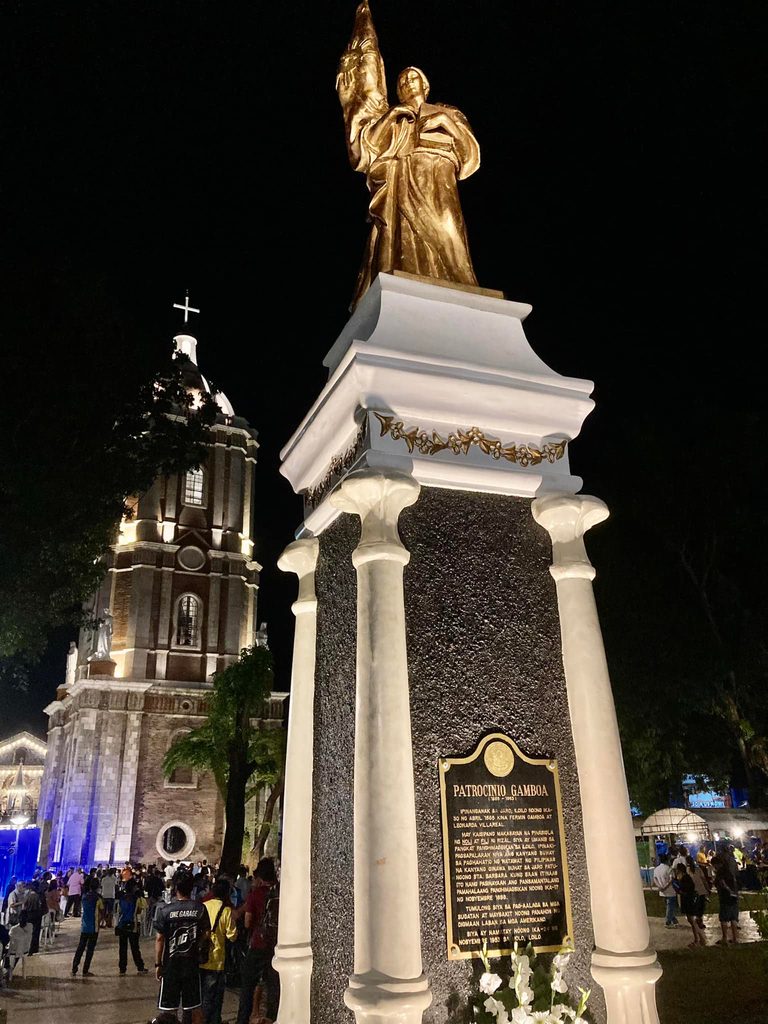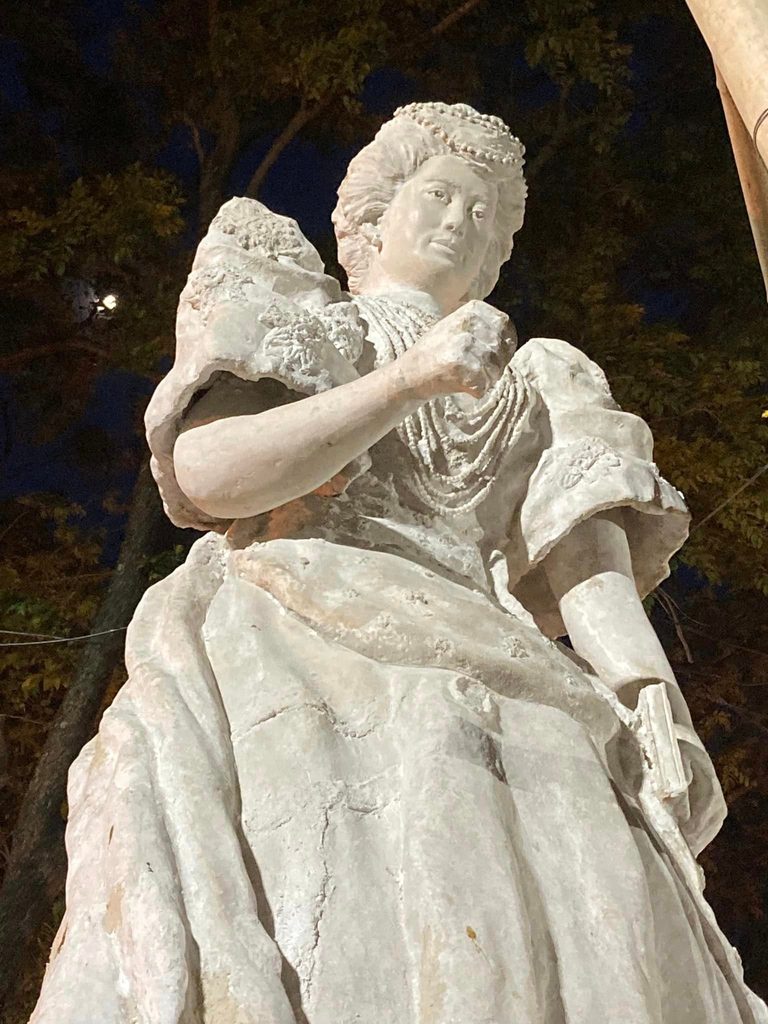SUMMARY
This is AI generated summarization, which may have errors. For context, always refer to the full article.
![[Ilonggo Notes] The ladies in the plazas of Iloilo City](https://www.rappler.com/tachyon/2023/12/women-iloilo-dec-4-2023.jpg)
It wasn’t too long ago that the plazas of the six districts of Iloilo City were derelict, dimly lit, and often stinky. There were permanent carryovers from town fiestas – mounds of ukay-ukay (used clothing), shabby and creaky rides, stray dogs, and dubious characters loitering around. Many people avoided the plazas at night.
All of that has changed – and now, Iloilo City’s plazas are joyous, well lit, clean, and landscaped, with dancing fountains and piped in music, once again becoming the center of the town’s social life. This is mainly due to Republic Act 10555 (2009) authored by then congressman Jerry Treñas, and amended in 2020, which declared several plazas of Iloilo City and two other areas as “cultural heritage zones,” thus opening an avenue for funding from Congress and the National Historical Commission.
Plazas were organized during the Spanish colonial era, under a policy of reduccion, where the town’s lay-out was planned with the plaza a center for political, religious, and social life. Around it would be the imposing church, the town hall, the market, and the houses of the richest and most prominent townspeople; later the school, police station, and health center would be added.
Once the church bells pealed, it was a signal of sorts – a call to prayers, funerals, and weddings; to evacuate from attacks by invaders. Everyone was encouraged to be within hearing distance, hence living bajo de la campana or “under the bells.”
As a child I recall the frequent free movie showings at the Molo Plaza. As the city grew, malls with multiplexes became alternatives to the plazas.

The plaza is also a site where national and local heroes may be honored. Almost every plaza nationwide would have a statue of Jose Rizal, in various poses and usually in a European-style overcoat. Iloilo City is no exception.
Back in the colonial era, Molo, Arevalo, and Jaro were separate towns with their own plazas. In 1937 when Iloilo City became a chartered city, the three towns above, plus Mandurriao and La Paz all became districts of the city. But several city plazas may be unique in that aside from the national hero, there are also statues or busts of prominent women leaders, several involved in the revolutions against Spain and America, or who fought for Filipino women’s education and the right to vote.

Jaro has the statue of Patrocinio Villareal Gamboa; Tya Patron, as she was called, is best known as the heroine who managed to smuggle the Philippine flag from Jaro to Sta. Barbara town in 1898 under the noses of the Spanish. Since there were roadblocks along the way because of the Ilonggo revolucionarios, Tya Patron and her companion pretended to be an arguing couple, with Tya Patron insulting and hitting her henpecked “husband” to the amusement of the guards. Little did they know that in the cart they were riding, under stacks of hay, were arms intended for the revolucionarios, and the flag was bundled up under her skirt. She was one of the organizers of the Comite Central Revolucionario de Visayas (Central Revolutionary Committee of the Visayas), which formed the nucleus of what later became the Revolutionary Government of the Visayas. She nursed wounded and sick soldiers in the battlefield, collected war contributions from the Chinese in Iloilo, and gathered food, medical supplies, arms, and ammunition for the revolutionary forces. Years later, offered a lifetime pension, she declined the offer from the colonial government, and passed away in 1953 at the ripe old age of 88. Her statue and marker in the Jaro plaza dates back to the 1980s.

Arevalo plaza has a new bust of Sofia Tiaozon Reyes de Veyra (1876-1953) to add to an NHI Memorial plaque installed in 1976. Born in Arevalo, she was a dynamo – educator, social worker, first secretary, and co-founder of the Asociacion Feminista Filipina, the first women’s club in the Philippines. According to Titchie Carandang-Tiongson, its establishment in June 1905 marked the start of the Feminist Movement in the country. Accomplishments of Feminista included: the segregation of women prisoners from men at the Bilibid Prisons, which eventually led to the establishment of the Correctional Institute for Women; persuading the government to hire women police matrons for the women detainees; founding day care centers for working mothers; and providing legal aid to indigenous women.
Sofia de Veyra also helped establish the society La Proteccion de la Infancia, which later became the Gota de Leche, one of the first private charities in the country, existing up to today. She organized the Manila Women’s Club which later became the nucleus of the National Federation of Women’s Clubs, which was at the forefront of the campaign for women’s right to vote and other rights. De Veyra was co-author of the pre-war school book Character and Conduct, and also co-wrote a cookbook, Everyday Cookery for the Home, in 1930.
She was at one time a vice president of the Centro Escolar University, and a social secretary of four presidents – Manuel L. Quezon, Sergio Osmeña Sr., Manuel Roxas, and Elpidio Quirino. In addition, she was an active member of the Anti-Leprosy and Anti-TB societies, raising funds for these organizations.
A post from the US Library of Congress notes that in 1917-1922, Sofia de Veyra was in Washington DC with her husband Jaime, who was Resident Commissioner of the Philippines. She promoted Philippine products, often dressed in a terno, wrote for several US newspapers, and gave speeches to the US Congress advocating for women’s rights to vote and Philippine Independence.

Molo, the former Chinese enclave or parian, is famed for its 160-year-old church with its central aisle lined up with 16 female saints, and is also known as the “women’s church.” Molo Plaza is unique in that the national hero does not have a statue, in spite of the fact that Rizal actually visited the church – and plaza – in 1896, on the way back to Manila from exile in Dapitan. All the figures in the plaza are those of females – eight of them. There is a lady in Maria Clara costume done in Filipino Art Deco style by the Italian Francesco Riccardo Monti. There is a temple with six goddesses from Greek mythology. And just in September, a statue of Purificacion “Pura” Garcia Villanueva Kalaw (1886-1954) was unveiled at the southern side of the plaza.
Pura was born in Arevalo and lived, grew up, and studied in Molo. Endowed with both beauty and brains, she became the first Philippine (Manila) Carnival Queen in 1908. Later she became a journalist, authored one of the first Philippine cookbooks, Condimentos Indigenas in 1918, and was a staunch advocate for women’s right to vote – she helped shepherd the bill for women’s suffrage at the Philippine assembly in 1907; it took 30 years before a plebiscite was organized and Filipino women won that vital right only in 1937. She married the historian-legislator and first director of the National Library, Teodoro M. Kalaw in the Molo Church in 1910. Their children included former senator Maria Kalaw Katigbak and the art critic Purita Kalaw Ledesma. A daughte-in-law, Eva Estrada Kalaw, was also a senator. In the Molo Plaza, her life-size statue is shown in a flowing terno, trademark bouffant hairdo, and pearls from her beauty queen days; she is holding a book in one hand and a pen in the other.
Interestingly and coincidentally, but perhaps not unexpectedly, Sofia de Veyra and Pura Kalaw both authored cookbooks in the 1920s. Maybe this is their contribution to Iloilo City’s new title as UNESCO Creative City for Gastronomy.
The Kalaw and De Veyra works were done by local sculptor Harry Mark Gonzales and his team.
Iloilo City apart, two heroines also have statues and NHI plaques in their respective plazas in the province – Teresa Magbanua (1868-1947) in Pototan, by sculptor TOYM de Leon Imao, and that of another revolutionary fighter and nurse, Nazaria Lagos (1851-1945), in her native Dueñas.
It may be time for another title for Iloilo – the “feminist capital” of the country! – Rappler.com
Vic Salas is a physician and public health specialist by training, and now retired from international consulting work. He is back in Iloilo City, where he spent his first quarter century.
Add a comment
How does this make you feel?

![[OPINION] Poverty is not a hindrance to success – that is a lie](https://www.rappler.com/tachyon/2024/06/Poverty-is-not-a-hindrance-to-success-%E2%80%93-that-is-a-lie-june-10-2024.jpg?resize=257%2C257&crop_strategy=attention)



![[Ilonggo Notes] Guimaras: Geared up for success](https://www.rappler.com/tachyon/2024/05/Ilonggo-Notes-Guimaras-May-6-2024.jpg?resize=257%2C257&crop=298px%2C0px%2C720px%2C720px)
![[Ilonggo Notes] Putting the spotlight on Ilonggo and regional cinema](https://www.rappler.com/tachyon/2024/04/Screenshot-2024-04-07-at-2.04.59-PM.png?resize=257%2C257&crop=321px%2C0px%2C809px%2C809px)
![[Ilonggo Notes] The foremost Filipino engraver, sadly unremembered, needs to be given his due](https://www.rappler.com/tachyon/2024/03/Figueroa-.jpg?resize=257%2C257&crop=265px%2C0px%2C720px%2C720px)
![[Ilonggo Notes] La Villa Rica de Arevalo: A storied past and bright future](https://www.rappler.com/tachyon/2024/01/from-vic-scaled.jpeg?resize=257%2C257&crop_strategy=attention)
![[Ilonggo Notes] The attractions along Iloilo City’s Bonifacio Drive](https://www.rappler.com/tachyon/2024/01/bonifacio-drive-lse-january-3-2024.jpg?resize=257%2C257&crop=280px%2C0px%2C720px%2C720px)

![[Time Trowel] Yamashita gold is a myth, and treasure hunting is not archeology](https://www.rappler.com/tachyon/2024/06/myth-yamashita-treasure-june-14-2024.jpg?resize=257%2C257&crop=435px%2C0px%2C1080px%2C1080px)
![[Time Trowel] Heritage for whom?](https://www.rappler.com/tachyon/2024/05/heritage-for-whom-may-3-2024.jpg?resize=257%2C257&crop_strategy=attention)
![[Time Trowel] Was there a Philippine Kingdom named ‘Kalaga Putuan Crescent’?](https://www.rappler.com/tachyon/2024/04/Kalaga-Putuan-Crescent-april-23-2024.jpg?resize=257%2C257&crop_strategy=attention)

There are no comments yet. Add your comment to start the conversation.